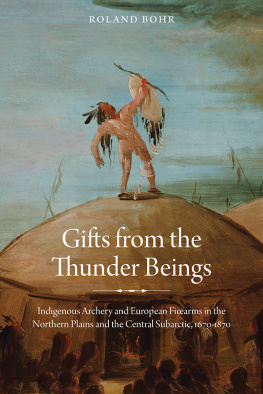SEVEN FALLEN FEATHERS
RACISM, DEATH, AND
HARD TRUTHS IN A
NORTHERN CITY
~ ~ ~ ~
TANYA TALAGA
Copyright 2017 Tanya Talaga
Published in Canada and the USA in 2017 by House of Anansi Press Inc.
www.houseofanansi.com
All rights reserved. No part of this publication may be reproduced or transmitted in any form or by any means, electronic or mechanical, including photocopying, recording, or any information storage and retrieval system, without permission in writing from the publisher.
Distribution of this electronic edition via the Internet or any other means without the permission of the publisher is illegal. Please do not participate in electronic piracy of copyrighted material; purchase only authorized electronic editions. We appreciate your support of the authors rights.
Library and Archives Canada Cataloguing in Publication
Talaga, Tanya, author
Seven fallen feathers : racism, death, and hard truths in a northern city
/ Tanya Talaga.
Issued in print and electronic formats.
ISBN 978-1-4870-0226-8 (softcover).ISBN 978-1-4870-0227-5 (EPUB).
ISBN 978-1-4870-0228-2 (Kindle)
1. Native childrenOntarioThunder BaySocial conditions. 2. Native
peoplesCanadaSocial conditions. 3. Native peoplesCanadaGovernment
relations. 4. CanadaRace relations. 5. Native peoplesCivil rightsCanada.
I. Title.
E98.S67T35 2017 305.897071312 C2016-906674-6
C2016-907020-4
Library of Congress Control Number: 2016958341
Book design: Alysia Shewchuk
Cover art: Christian Morrisseau

We acknowledge for their financial support of our publishing program the Canada Council for the Arts, the Ontario Arts Council, and the Government of Canada through the Canada Book Fund.
For the next generation, Natasha and William
For strong mothers, Sheila and Margaret
And for Jethro, Curran, Robyn, Paul, Reggie, Kyle, and Jordan
CONTENTS
Prologue
Chapter 1: Notes from a Blind Man
Chapter 2: Why Chanie Ran
Chapter 3: When the Wolf Comes
Chapter 4: Hurting from the Before
Chapter 5: The Hollowness of Not Knowing
Chapter 6: We Speak for the Dead to Protect the Living
Chapter 7: Brothers
Chapter 8: River, Give Me My Son Back3
Chapter 9: Less Than Worthy Victims
Chapter 10: Seven Fallen Feathers
Epilogue
Notes
Suggested Reading
Acknowledgements
Index
About the Author
~ ~ ~ ~
The Anishinaabe are guided by seven principles:
Zah-gi-di-win (love): To know love is to know peace.
Ma-na-ji-win (respect): To honour all of creation is to have respect.
Aak-de-he-win (bravery): To face life with courage is to know bravery.
Gwe-ya-kwaad-zi-win (honesty): To walk through life with integrity is to know honesty.
Dbaa-dem-diz-win (humility): To accept yourself as a sacred part of creation is to know humility.
Nbwaa-ka-win (wisdom): To cherish knowledge is to know wisdom.
De-bwe-win (truth): To know of these things is to know the truth.
Bakaan nakeii ngii-izhi-gakinooamaagoomin
( We Were Taught Differently: The Indian Residential School Experience )
~ ~ ~ ~
~ ~ ~ ~
Cultural genocide is the destruction of those structures and practices that allow the group to continue as a group. States that engage in cultural genocide set out to destroy the political and social institutions of the targeted group. Land is seized, and populations are forcibly transferred and their movement is restricted. Languages are banned. Spiritual leaders are persecuted, spiritual practices are forbidden, and objects of spiritual value are confiscated and destroyed. And, most significantly to the issue at hand, families are disrupted to prevent the transmission of cultural values and identity from one generation to the next. In its dealing with Aboriginal people, Canada did all these things.
Honouring the Truth, Reconciling for the Future: Summary of the Final Report of the Truth and Reconciliation Commission of Canada
~ ~ ~ ~
PROLOGUE
You see, the giant Nanabijou made a deal.
The giant spent his days lumbering around Gichigami, the colossal body of water that looked like a sea. He stomped and he stomped and he stomped. His noisy footprints created massive valleys and rock faces, cut from the granite and the slate that surrounded the water.
But he never bothered the Ojibwe, who lived with him in the gorges and forests that he left standing. They had a close existence, full of happiness and peace. On the smooth rock walls near Gichigamis shores, the Ojibwe drew pictographs, telling the stories of their lives for later generations to see.
Nanabijou had a secret only the Ojibwe knew: embedded in the rock there was a shiny metal that twinkled like the starry sky. The giant didnt want anyone to take something of such beauty away from him. So he told the Ojibwe never to tell the white man where he had hidden his silvery stash. If they kept his secret, Nanabijou promised to always protect them. If they did not, if they told the white man, who was beginning to settle in wooden houses near Gichigami, something catastrophic would happen and he would never be able to protect the Ojibwe again. The Ojibwe listened and they agreed to keep Nanabijous secret safe.
For many moons, the giant and the Ojibwe lived in peace. Then one day, the Ojibwe found a Sioux man who said he was lost and in need of help. They took him in. But the Sioux man was a secret sneak. He had heard stories of the precious glittery metal and he wanted some to take back to his people. He befriended the Ojibwe and lived with them so he could gain their trust and find out where the silver was hidden.
The Sioux man waited patiently. Then one day he overheard the Ojibwe talking about where the silver could be found. Armed with this knowledge, he snuck away in search of the loot.
He slipped into a canoe and manoeuvered down the waters and into the crevice where the silver lay. When the Sioux man saw the treasure, he could not believe his eyes or his good fortune. He filled his pockets and stole away in the canoe.
The Sioux man was not as clever as he thought. As he made his escape down the river, he ran into travelling white men who captured him and took him prisoner. He tried to barter for his freedom with a piece of the stolen silver. But the greedy white men took his loot and asked for more. The Sioux man refused to tell them where he had found it but the white men would not take no for an answer. They knew how they could get him talking. They sat by the fire and brought out the firewater. The firewater calmed his fears, made him feel happy, made his lips loose. When he was full of drink, the white men asked again where the silver was stashed and the Sioux man spilled out the secret.












